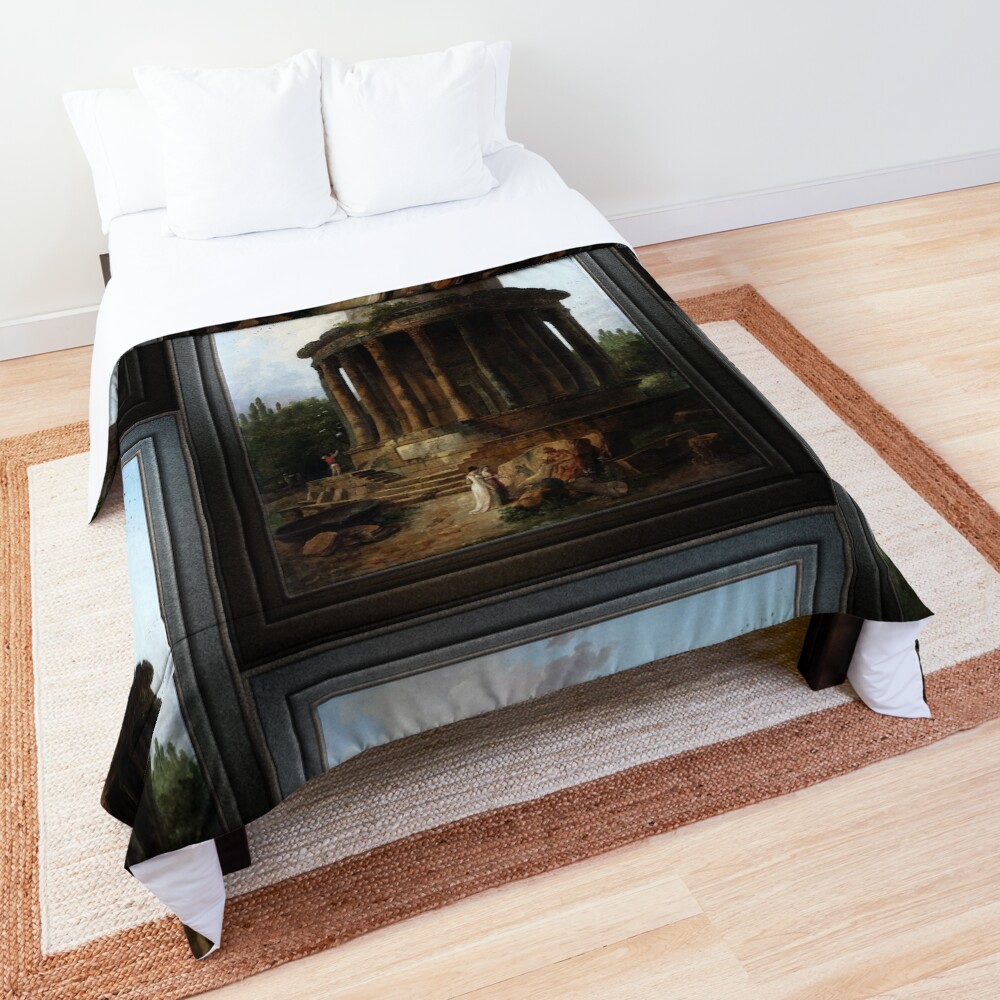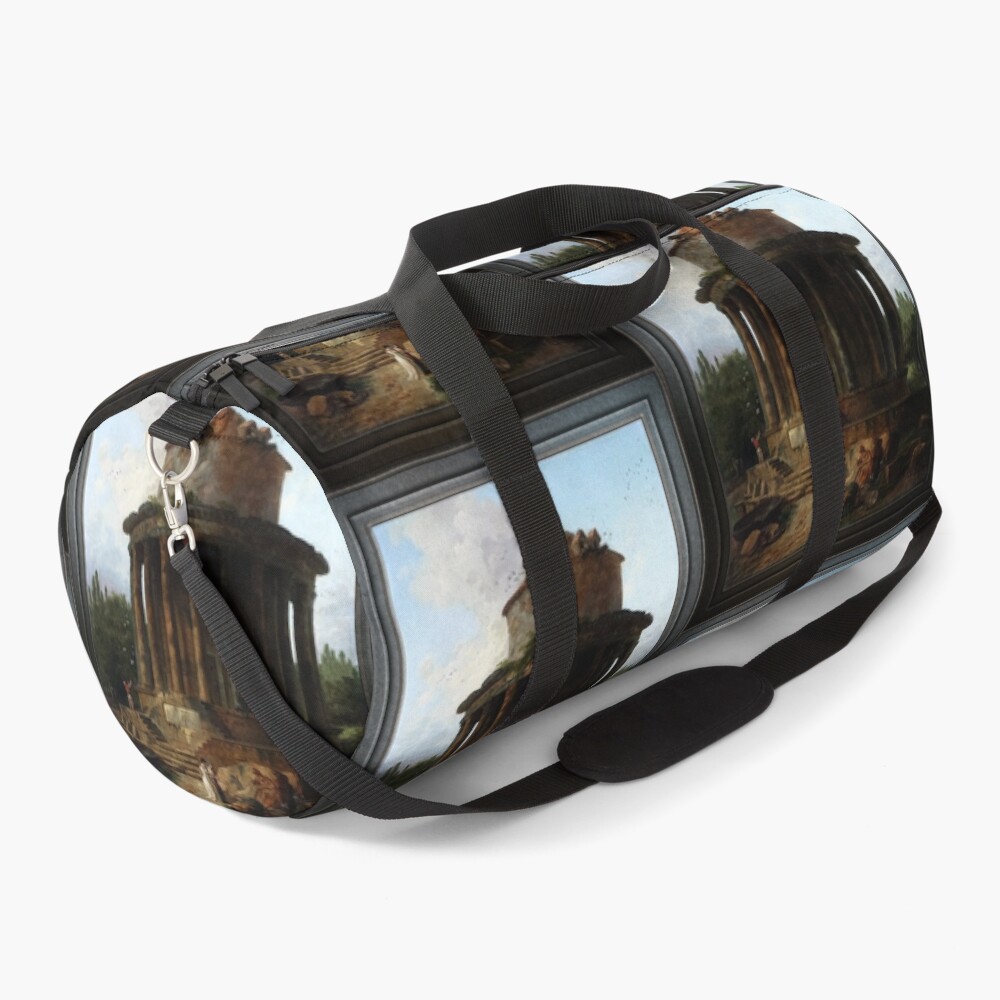
Un Temple Circulaire
Un Temple Circulaire Jadis Dédié (A Once Dedicated Circular Temple) by French Painter Хуберт Роберт (1733 – 1808), who specialized in creating artwork of the Rococo, Neoclassicism, Romanticism, Realism, and Renaissance styles.

This painting by Hubert Robert shows a group of people around an ancient circular temple ruin, that has become home to birds (most likely pigeons); with two men at the side of the temple actively forcing the birds to take flight.
While two women at the front of the temple, are in a discussion in front of a part of a fallen piece of architecture that has a painting on it, of what appears to be a soldier partially embracing a nude woman that has her back to the viewer.
Un Temple Circulaire Jadis Dédié is a retouched digital art old masters reproduction of a public domain image that is available for purchase online as a отисак на ваљаном платну.
Инфо испод од Википедиа.орг
Хуберт Роберт је рођен у Паризу год 1733. Његов отац, Николас Роберт, био у служби Франсоа-Жозефа де Шоазела, маркиз де Стаинвилле водећи дипломата из Лорене. Млади Роберт је завршио студије код језуита на Цоллеге де Наварре године 1751 and entered the atelier of the sculptor Michel-Ange Slodtz who taught him design and perspective but encouraged him to turn to painting. Ин 1754 he left for Rome in the train of Étienne-François de Choiseul, son of his father’s employer, who had been named French ambassador and would become a Secretary of State for Foreign Affairs to Louis XV in 1758.

He spent fully eleven years in Rome, a remarkable length of time; after the young artist’s official residence at the French Academy in Rome ran out, he supported himself by works he produced for visiting connoisseurs like the abbé de Saint-Non, who took Robert to Naples in April 1760 to visit the ruins of Pompeii. The marquis de Marigny, director of the Bâtiments du Roi kept abreast of his development in correspondence with Natoire, director of the French Academy, who urged the pensionnaires to sketch out-of-doors, from nature: Robert needed no urging; drawings from his sketchbooks document his travels: Villa d’Este, Caprarola.
View of the Port of Rippeta in Rome, c. 1766, showing the Ancient Roman Pantheon next to an imaginary port
The contrast between the ruins of ancient Rome and the life of his time excited his keenest interest. He worked for a time in the studio of Pannini, whose influence can be seen in the Vue imaginaire de la galerie du Louvre en ruine (илустрација). Robert spent his time in the company of young artists in the circle of Piranesi, whose capricci of romantically overgrown ruins influenced him so greatly that he gained the nickname Robert des ruines.[2] The albums of sketches and drawings he assembled in Rome supplied him with motifs that he worked into paintings throughout his career.



